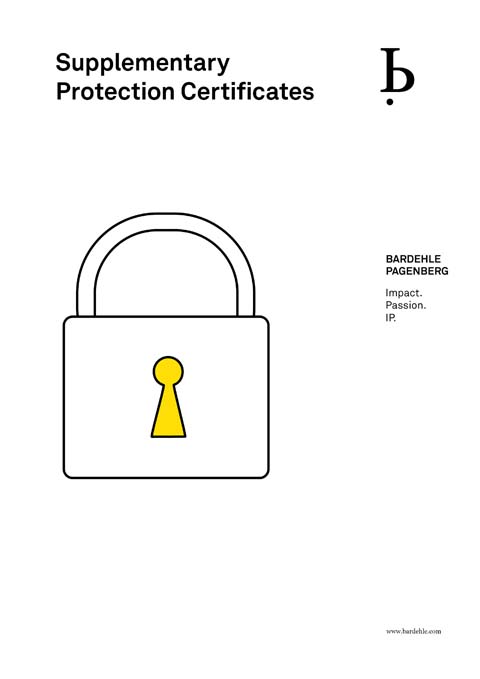Supplementary Protection Certificates
1. Duration
The duration of a supplementary protection certificate is determined on the basis of the period of time between the filing date of the basic patent and the granting of the first authorization for the product within the European Community. Five years are deducted from that period of time. If, for example, there is a period of ten years between the filling date and the date of issue of the authorization, the supplementary protection certificate will be valid for five years. A period longer than ten years does not affect the length of time a supplementary protection certificate can be valid as this is limited by the regulation to a maximum of five years.
2. Product definition
A supplementary protection certificate is issued for a product, i.e. a substance or a combination of substances. Changes to its medicinal use (indication), galenic preparation, the species (animal or human) for which it is intended as a treatment, or its pharmacological effectiveness or safety do generally not provide for the existence of two different products within the meaning of the Regulation.
Basically, derivatives such as salts or esters from a product are included in the scope of a supplementary protection certificate. If the derivative is protected by its own patent, however, a supplementary protection certificate may still be issued for it, subject to certain conditions, even if a certificate has already been issued for the original product.
3. A maximum of one supplementary protection certificate per product per applicant
Each applicant, irrespective of the number of basic patents he may have, can generally only be issued with one supplementary protection certificate per product. If several applicants have several basic patents, a supplementary protection certificate may be issued to each applicant.
4. Applicant only requires his own basic patent, not his own licence
The requirement for the issue of a supplementary protection certificate is possession of a patent, not a licence. Generally, an application for supplementary protection can even be based on an authorization of a third party; this is possible even if it is contrary to the wishes of the authorization holder.
5. Time limits for application
An application for a supplementary protection certificate can be made within six months from the grant of the patent or, if issued later, of the authorization. This fact alone highlights how important it is for companies to have well coordinated patent and licensing departments.
6. Effect of a supplementary protection certificate
Supplementary protection certificates can basically be used in the same way as patents: the owner can prohibit any third party from using the protected product, and infringements can be pursued through the courts. On the other hand, invalidation proceedings may be brought against a supplementary protection certificate.
The supplementary protection certificate follows the category of the underlying patent: if the basic patent is a patent for a substance, the supplementary protection certificate likewise protects the substance; if a process is protected by the basic patent, the protection of supplementary protection certificate likewise only covers the process; if, finally, the basic patent protects a use, then the protection afforded by the supplementary protection certificate likewise only applies to the use.
The legal requirements for supplementary protection certificates need to be given careful consideration as early as the planning and design stage of both patent and license portfolios.
On July 1, 2019, a significant amendment to the regulation concerning supplementary protection certificates for medicinal products entered into force. With the amendment, supplementary protection certificates no longer confer protection against the manufacture of medicinal products intended for the export to countries outside the European Union. Further, a medicinal product otherwise protected by a supplementary protection certificate can be manufactured and stored no earlier than six months before the expiry of the corresponding supplementary protection certificate in order to place it on the market in the European Union after the expiry of the supplementary protection certificate.

